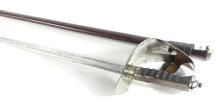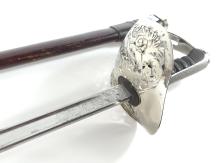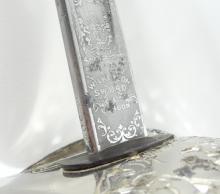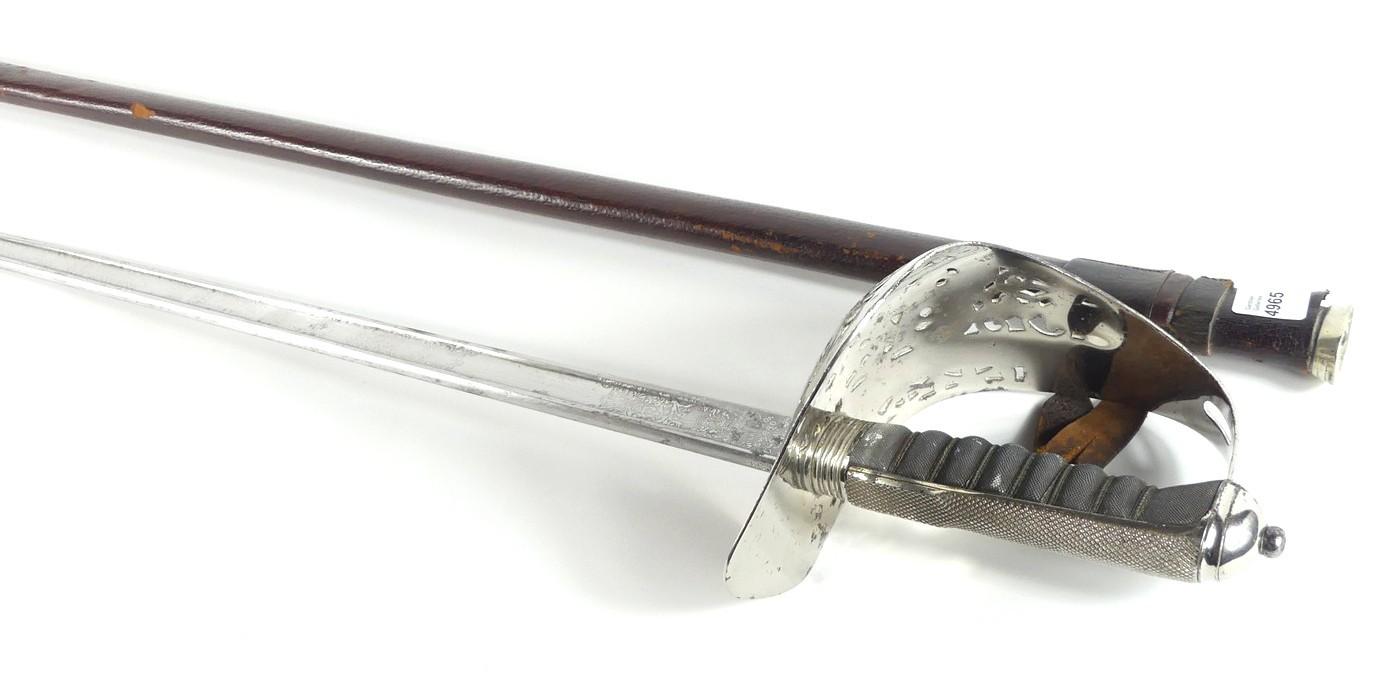BRITISH INDIAN ARMY OFFICER'S SWORD CIRCA 1920'S




LOT DETAILS
In the 1897 pattern, a steel straight-bladed pointed, partially two-edged sword with a basket hilt in use as the regulation sword for officers of the line infantry of the British Army from 1897 to present day; officers carried these swords into battle at the start of World War I but by June, 1915 Army Order 68 prohibited the carrying of swords by infantry on battlefields so officers would not become conspicuous to the enemy; the blade is 830mm long and 25mm wide at the shoulder, weighs approx. 0.8kg and is decoratively etched on both sides; the hilt basket is
decorated with pierced scrollwork with the Royal cypher of the reigning monarch, George V set on the lower knuckle bow, the cypher of particular plated sword, Serial No. 62307, bears the initials "GRI" (Georgius Rex Imperator) which places it among the much rarer examples of the sword which carry the more common "GR" (per Antique Swords, UK based seller worldwide of authentic antique and vintage swords and sabres); "GRI" is also etched on both sides of the sword blade; at the shoulder end of the blade, the Damascus cross symbol surrounds the Proof mark which signifies the sword is of the best proved blades thereby qualifying for military service
On the opposite side is the mark of the manufacturer, Wilkinson Sword Co. Ltd., London, beneath the Royal Crest "By Appointment"; the sword comes with its original leather scabbard (plated entry ring) which shows some wear; Provenance is currently somewhat speculative - the seller
believes the sword may have been the original property of an army officer stationed in the Punjab, India, now Pakistan, but research has so far failed to establish the name of the officer to whom this sword was attributed, though British Military Archives may well provide some answers in the future; the sword was discovered in Rawalpindi in 2000; Rawalpindi was the largest British Indian Army garrison from the late 19th century to partition in 1947 after which it became the HQ
of the Pakistan Army; how the sword ended up among the dusty and disheveled inventory in the back of an old man’s uninspiring curio store is a mystery! The sword is in good condition with some pitting spots in the plating
